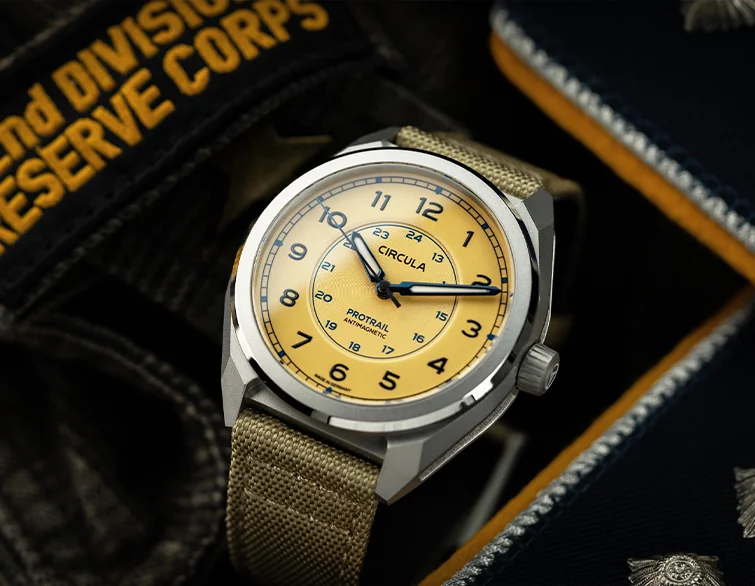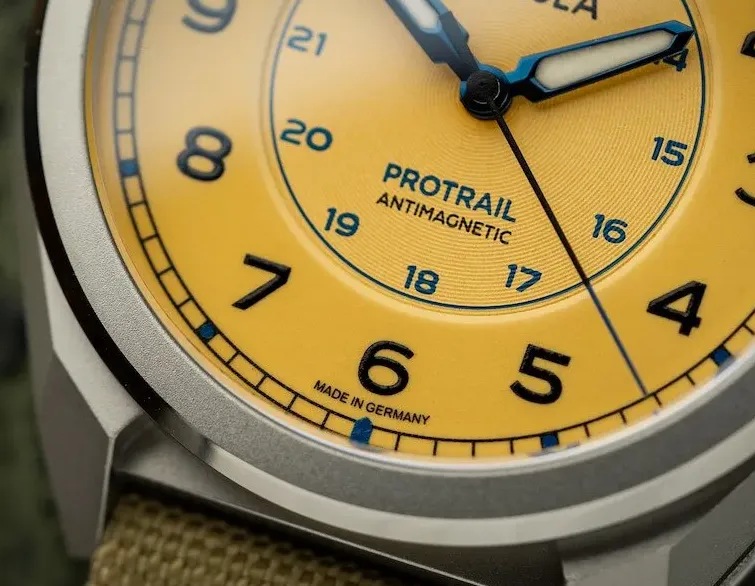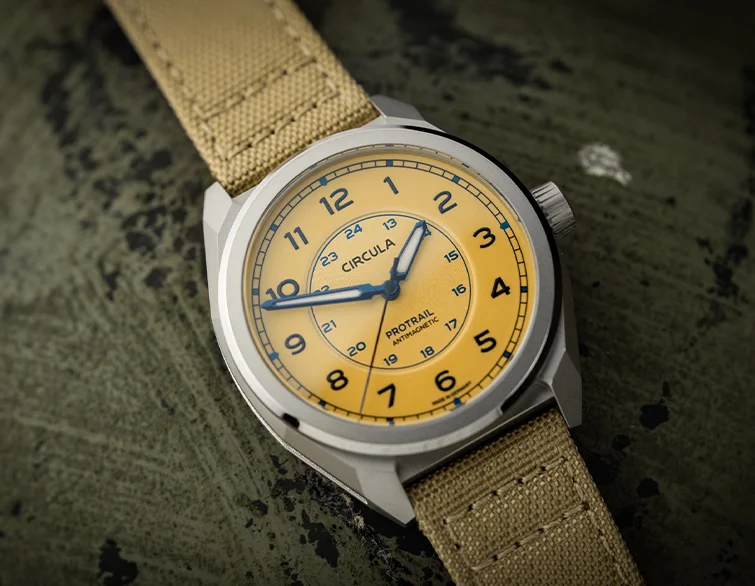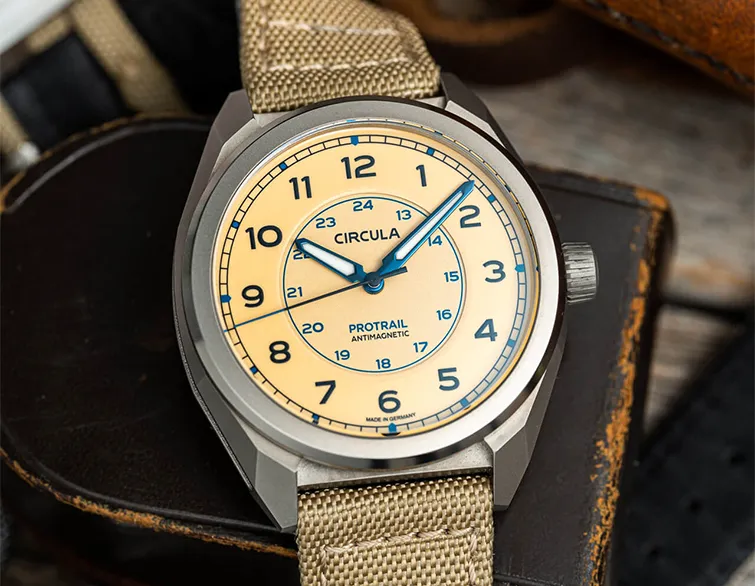Antimagnetische Uhren
Sicherer Schutz vor Magnetfeldern
Dass Magnete und mechanische Uhren keine gute Kombination sind, ist klar. Niemand käme auf die Idee einen Magnet an eine Automatikuhr zu halten. Trotzdem ist es so, dass Magnetismus eine der häufigsten Ursachen ist, warum eine Automatikuhr zu schnell läuft, nachgeht oder komplett stehen bleibt. Eine Lösung für dieses Problem sind sogenannte „Antimagnetische Uhren“, die im Gegensatz zu herkömmlichen mechanischen Uhren unempfindlicher gegenüber Magnetfeldern sind.
Bevor wir zu den verschiedenen Typen von antimagnetischen Uhren kommen, schauen wir uns zunächst aber an, welche Magnetfelder es im Alltag gibt und warum sich Magnetismus negativ auf die Ganggenauigkeit von Uhren auswirken kann. Am Ende dieses Artikels geht es darum, wie man erkennen kann, ob eine Uhr magnetisiert ist und welche Möglichkeiten es gibt, um die Uhr wieder zu entmagnetisieren.
Magnetfelder im Alltag
Neben Stößen können auch Magnetfelder die Ganggenauigkeit von Uhren negativ beeinflussen. Bei Magnetfeld denkt man zuerst einmal an einen Magnet. Aber neben klassischen Magneten wie man sie z. B. von Taschenverschlüssen oder Kühlschrankmagneten kennt, verursachen auch elektrische Geräte wie Handmixer, Akkustaubsauger, Tower-PCs, Soundbars oder auch Lautsprecher Magnetfelder.
Deshalb kann eine nicht-antimagnetische Automatikuhr, die z. B. mehrere Stunden aus Unwissenheit auf einer Soundbar abgelegt wurde, anschließend sehr unpräzise laufen oder sogar stehen bleiben. Denn dass diese Soundbar durch einen Magnet betrieben wird und dieser (auch im Standby-Modus!) ein Magnetfeld verursacht, das sich wiederum auf die Ganggenauigkeit der Uhr auswirkt, ist den wenigsten bewusst.
Aber warum wirken Magnete bzw. Magnetfelder so stark auf mechanische Uhren ein?

Der Einfluss von Magnetfeldern auf Uhren
Um zu verstehen, warum Magnete so eine starke Wirkung auf mechanische Uhren haben, gehen wird kurz auf den Aufbau und die Funktionsweise dieser Uhren ein. Besonders wichtig ist hier die hauchdünne Spiralfeder, die zusammen mit der Unruhe das „Herz“ der Uhr bildet und dafür sorgt, dass eine mechanische Uhr richtig tickt.
Wird das Uhrwerk nun einem Magnetfeld ausgesetzt und die Spiralfeder ist aus einem ferromagnetischen Material wie z. B. Eisen oder Nickel hergestellt, dann wird die Spiralfeder magnetisiert. Je nach Stärke des Magnetfelds hat das dann kleinere oder größere Auswirkungen auf die Ganggenauigkeit einer Uhr. Das Spektrum reicht hier von Abweichungen von mehreren Minuten bis mehrere Stunden pro Tag! Bei besonders starken Magnetfeldern kann eine Uhr sogar komplett stehen bleiben.
Das liegt daran, dass eine magnetisierte Unruhspiralfeder „verklebt“ werden kann und dadurch nicht mehr so „rund“ schwingt wie eine nicht-magnetisierte Unruhspiralfeder. Bevor wir zu den Uhren kommen, die unempfindlich gegenüber Magnetfeldern sind, werfen wir noch einen kurzen Blick auf die Geschichte der antimagnetischen Uhr.
Die Geschichte der antimagnetischen Uhr
Die Geschichte der antimagnetischen Uhren begann vor über 100 Jahren. Bereits 1915 wurde die erste Uhr dieser Art entwickelt. Es handelte sich dabei um eine Taschenuhr. Die Entwicklung von antimagnetischen Uhren war nämlich schon zu Beginn des 20. Jahrhunderts nötig, da mechanische Uhren schon damals negativ durch Magnetfelder beeinflusst wurden. So störten beispielsweise die Elektromotoren der Lokomotiven oder auch die magnetischen Ablenkspulen von Radarschirmen in Flugzeugen die Ganggenauigkeit der Uhren. Die erste Armbanduhrenserie mit Magnetfeldschutz wurde 1930 produziert und in den 1940er Jahren kam das erste Uhrenmodell auf den Markt, das das Uhrwerk mittels des Prinzips des sogenannten Faraday’schen Käfigs bzw. Weicheisenkäfigs vor Magnetfeldern schützte.

Typen von antimagnetischen Uhren
Heutzutage haben sich besonders zwei Typen von magnetunempfindlichen Uhren durchgesetzt, die wir uns genauer anschauen werden: antimagnetische Uhren mit Weicheisenkäfig und seit ca. 2000 auch Uhren mit Spiralfedern aus Silizium oder anderen amagnetischen Materialien wie z. B. Glucydur.
Antimagnetische Uhren
mit Weicheisenkäfig
Bei diesem Uhrentyp wird das gesamte Uhrwerk durch einen sogenannten Weicheisenkäfig umhüllt, um es vor dem Einfluss von Magneten zu schützen. Weicheisen besteht aus unlegiertem Eisen von hohem Reinheitsgrad und zeichnet sich dadurch aus, dass es sich sehr leicht magnetisieren, aber nicht dauermagnetisieren lässt. Es nimmt den Magnetismus auf, gibt ihn schnell wieder ab und schützt somit das Uhrwerk zuverlässig und dauerhaft vor dem Einfluss von Magneten. Ein Weicheisenkäfig für Uhren besteht aus dem Ziffernblatt, einem Werkring und dem Boden. Damit das Uhrwerk wirklich komplett umschlossen ist, haben Uhren mit Weicheisenkäfig typischerweise eine verschraubte Krone und keine Datumsanzeige.
Das präzise Sellita SW200-1 Uhrwerk in der Elaboré Ausführung, das in der Circula ProTrail Field Watch verbaut ist, ist durch den Weicheisenkäfig vor Magnetfeldern von bis zu 80.000 A/m (oder fast 100.000 Mikrotesla μT, bzw. 1.000 Gauss) geschützt. Zum Vergleich: Von einer handelsüblichen Soundbar gehen rund 5000 μT aus. Das Gehäuse ist außerdem bis zu 1.200 Vickers kratzfest.
Diese Besonderheiten machen die Circula ProTrail zu einem robusten Begleiter im Alltag und bei Outdooraktivitäten!

Uhren mit Spiralfedern aus amagnetischen Materialien
Bei antimagnetischen Uhren dieses Typs enthalten die Materialien der Spiralfedern möglichst keine ferromagnetischen Bestandteile und sind dadurch unempfindlich gegen magnetische Einflüsse. Ein häufig genutztes Material ist Silizium, das nicht nur amagnetisch, sondern auch korrosionsresistent ist. Da Silizium aber stark auf Temperaturschwankungen reagiert, sind Siliziumspiralfedern häufig noch hauchdünn mit Siliziumoxid beschichtet.
Ein weiteres amagnetisches Material, das für Spiralfedern verwendet wird, ist Glucydur. Die Legierung aus Kupfer, Beryllium und Eisen ist antimagnetisch, korrosionsresistent, sehr hart und außerdem resistent gegenüber Temperaturschwankungen
So findet man heraus, ob eine Uhr magnetisiert ist
Da längst nicht alle Uhrwerke mit Weicheisenkäfigen geschützt sind oder eine amagnetische Spiralfeder haben, ist es natürlich wichtig herauszufinden, ob eine Uhr mit Ganggenauigkeitsproblemen einfach nur (versehentlich) magnetisiert wurde oder ob andere Probleme die Ursache sind.
Ob eine Uhr magnetisiert wurde, findet man am einfachsten heraus, indem man einen Kompass neben die Uhr legt. Wird die Kompassnadel abgelenkt, dann ist das ein Zeichen dafür, dass die Uhr magnetisiert ist.
Auch ein Uhrmacher kann prüfen, ob die Uhr magnetisiert ist. Sollte die unüblich hohe Gangabweichung eine andere Ursache haben, dann ist die Uhr beim Uhrmacher auch gleich in besten Händen.
Uhr entmagnetisieren
Wenn der Uhrmacher festgestellt hat, dass die Uhr magnetisiert ist, dann kann er die Uhr schnell wieder entmagnetisieren. Eine andere Methode ist es sich selbst einen (Uhren-)Entmagnetisierer anzuschaffen. Diese Geräte gibt es in unterschiedlichen Preisklassen.
Und wenn Sie gerne eine Uhr haben möchten, deren Uhrwerk vor Magnetfeldern von bis zu 80.000 A/m geschützt ist, dann schauen Sie sich unbedingt die Circula ProTrail an!

